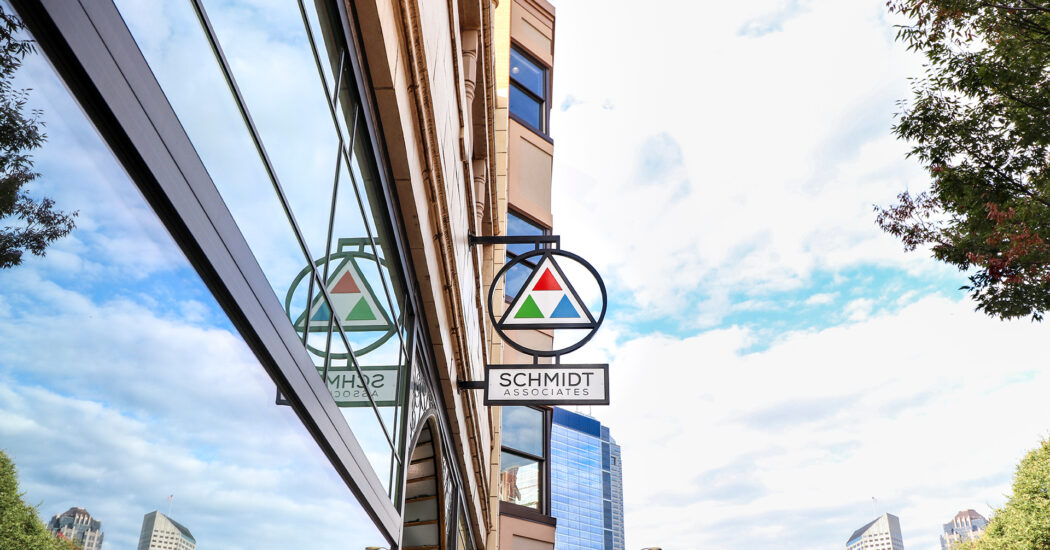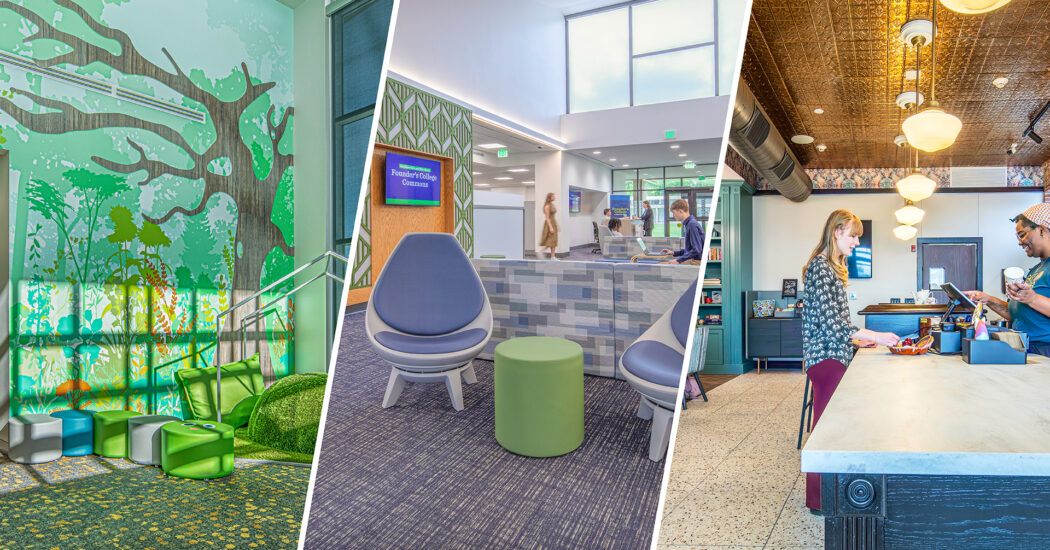Adapting, Expanding, Prevailing
-
Category
Studio-Higher Ed, Perspectives, Innovation -
Posted By
Lisa Gomperts -
Posted On
Mar 07, 2023
Schmidt Associates designers work to re-imagine existing space for Spalding University’s physical therapy program
On the Spalding University campus in downtown Louisville, Ky., a new school of physical therapy will begin educating the next wave of compassionate, caring, and skilled physical therapists in a $7M building beginning in fall 2023. Located along Spalding’s Health Sciences Corridor on South Third Street, the building is intended to make a positive impact on the lives of children and families while also improving the neighborhood.
“The purchase and renovation of the V.V. Cooke Chevrolet dealership demonstrates the University’s commitment to continuing to invest in downtown Louisville, which has been home to Spalding University for over 100 years,” said Spalding University Chief Advancement Officer Caroline Heine. “We chose to work with Schmidt Associates because they had the right combination of relevant team and higher education experiences, specifically with health-related technical spaces, and they put together a thoughtful approach to the project and design process.”
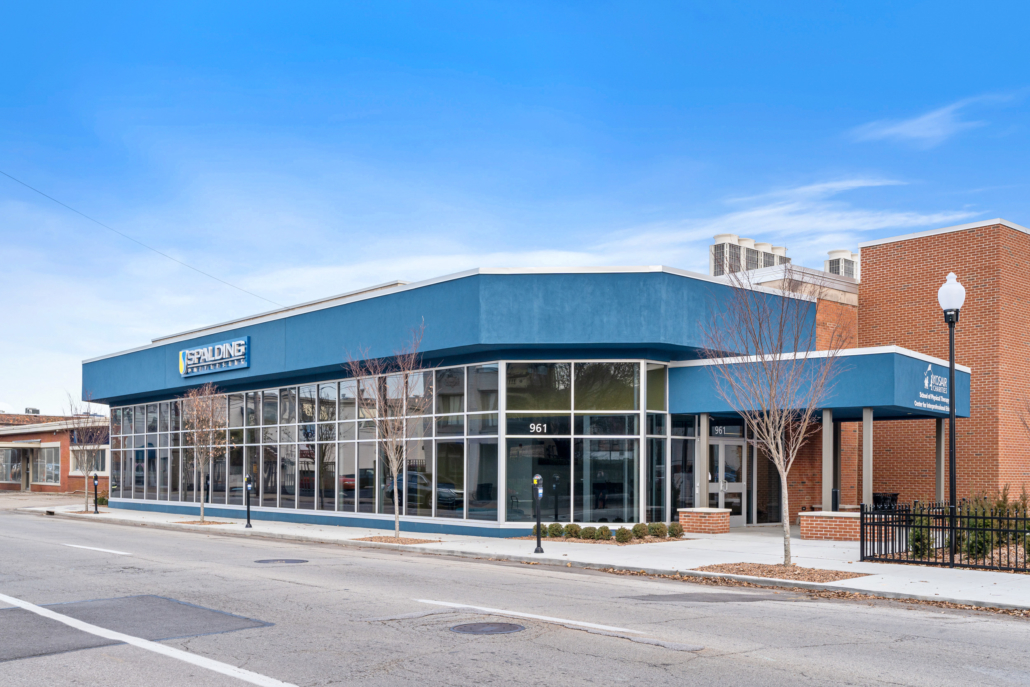
Schmidt Associates architects, engineers, and interior designers used evidence-based design perspectives, a proven project management process, and consistent communication with Owners. With this approach, we helped the Spalding University transform the dealership into a state-of-the-art, 24,063-sq. ft. academic center called the Kosair Charities School of Physical Therapy and Center for Interprofessional Education that includes collaboration spaces and modern laboratories.
While the building is impressive and a major milestone for the City of Louisville and the State of Kentucky, the story behind how it came together is a shining example of how higher education and healthcare building design principles can coexist to create a beautiful, modern structure that has helped to further align campus offerings and expand graduate-level programs.
A virtual design approach
The entire Kosair Charities School of Physical Therapy and Center for Interprofessional Education project was designed virtually between the two Schmidt Associates offices in Louisville and Indianapolis during the height of the COVID-19 pandemic. Shortly after Schmidt Associates was hired and before the project design phase began, Spalding University hired Elisa M. Zuber, PhD as a professor and program chair. Dr. Zuber and the University had never worked with Schmidt Associates, a process-driven firm, so there was a deep connection from the start. The University also took notice of Schmidt Associates’ experience and expertise with master planning and higher education and healthcare facility design knowledge. With goals of acquiring nearby buildings to further develop the campus’s health science corridor, the firm had a monumental task to complete.
Overcoming challenges
Any adaptive reuse project can present its fair share of challenges, and within any project, several details can compound issues without a true understanding of how to develop resolutions. This project was no different. For starters, the building had no height, a concrete shell was all the team had to work with, and the building was comprised of three separate spaces from three different eras. Also, a gas tank located inside the building was an outlier that presented significant safety concerns. Finally, the construction administration budget quickly became maxed out due to the age and condition of the building and equipment, such as air handling units being delayed due to supply chain woes.
Believing in transparency and acting in the best interest of the Owners, the design team pulled through and kept in consistent contact with the Owners. Additionally, a lot of extra field time and overall effort was devoted to making things right. In the end, this strategy proved to be a winner because it built client trust.
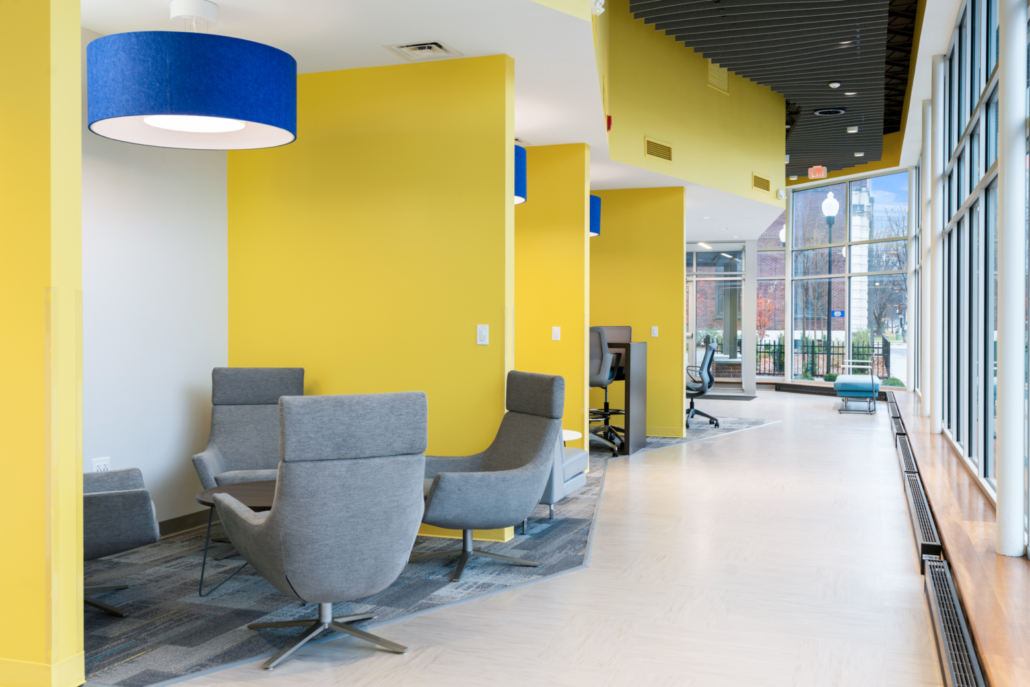
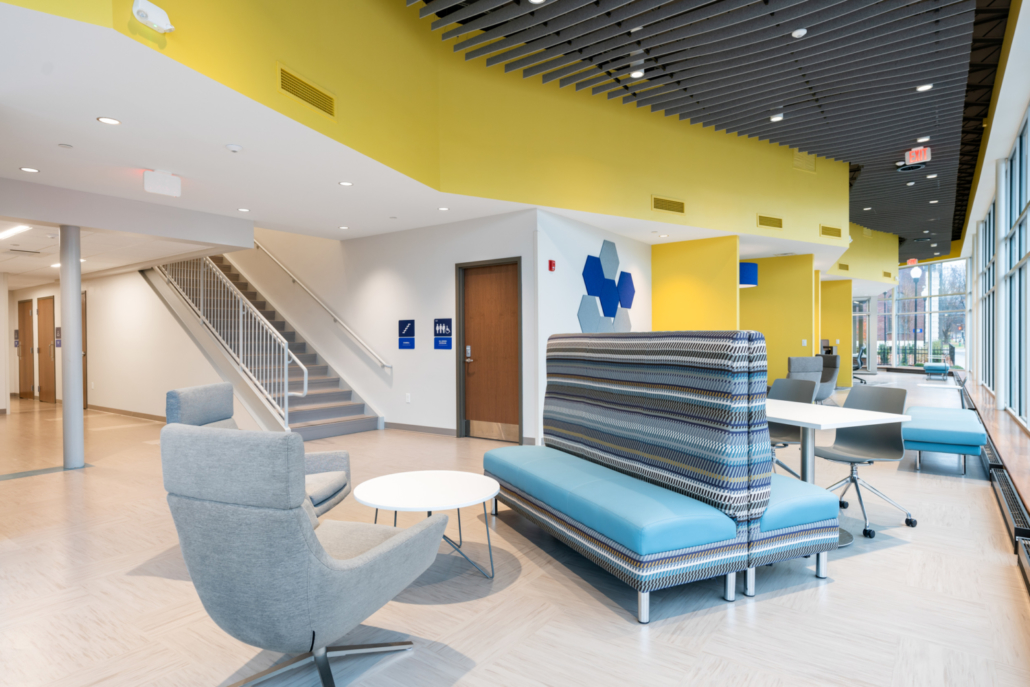
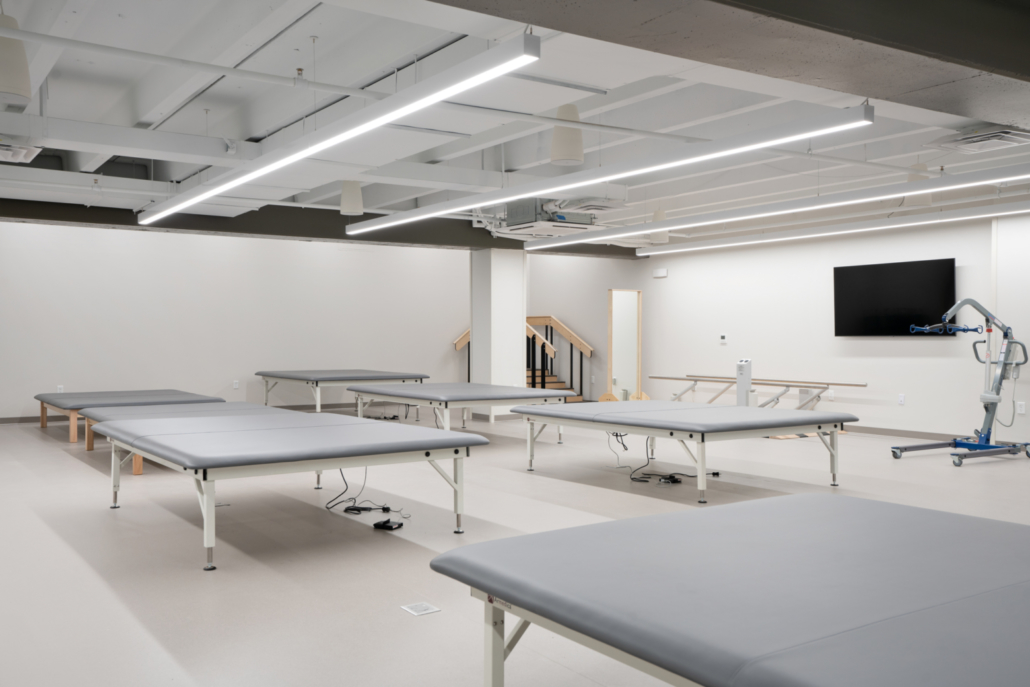
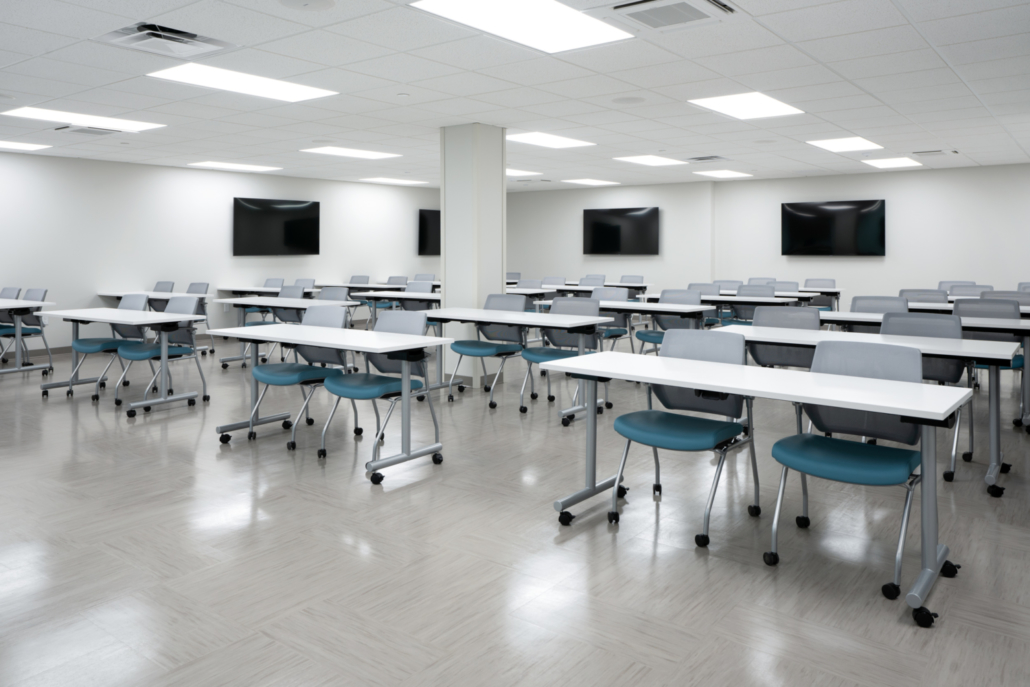
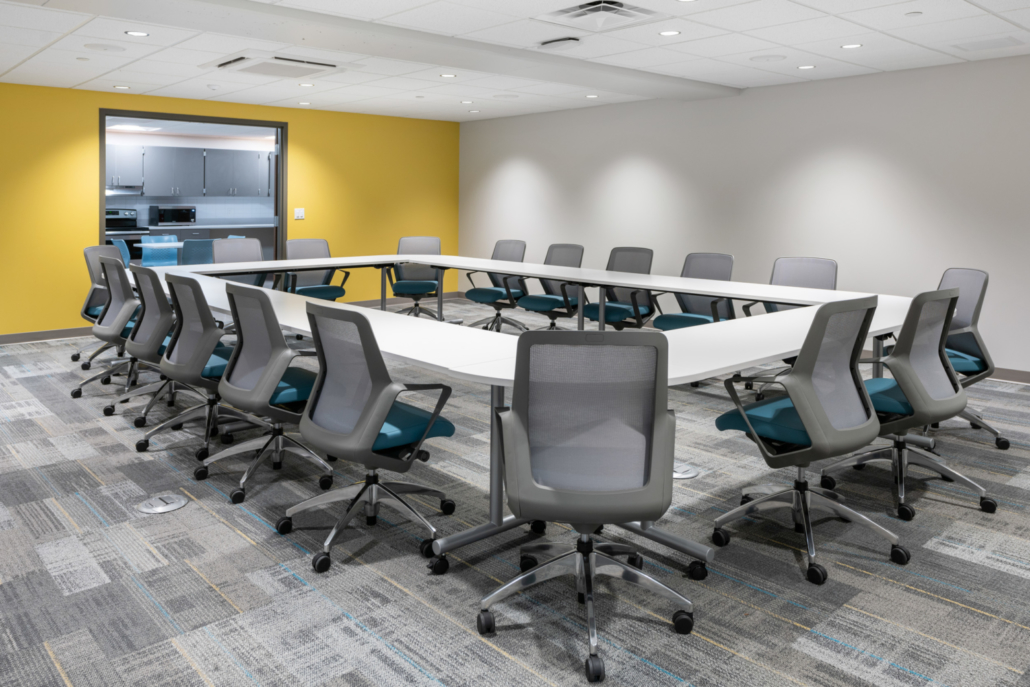
Lessons learned
No matter how complex or routine a project may be, there is always a lot that can be learned. Thinking back on this work, the design team believes it is imperative to understand how to best collaborate within the framework presented. This includes developing a comfort level with open dialogue, anticipating needs, and always recognizing learning curves and how to resolve them for maximum efficiency. By refining processes throughout the project, great outcomes were realized, and positive workforce contributions are a mere program course offering away.
“Schmidt Associates was a pleasure to work with because they were excellent with project management and communication,” Heine said. “We are grateful to them for being such a valuable project partner, and we highly recommend working with them.”
Like what you read? Let’s talk about your next higher education design project.





